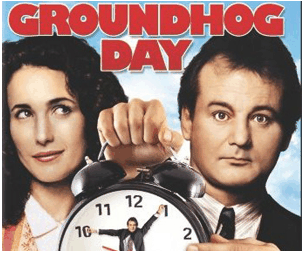
The Reserve Bank of Australia’s (RBA) Financial Stability Review, released yesterday, contained at least three unambiguous warnings that Australian lenders should not seek to relax lending standards in a bid to increase market share and boost profitability:
“With demand for credit likely to remain moderate, a challenge for firms in a competitive banking environment will be to resist the pressure to ease lending standards to gain market share in the pursuit of unrealistic profit expectations…”
“While there is little evidence over the past year that they have been imprudently easing lending standards in a bid to boost their credit growth, they are seeking ways to sustain the growth in their profitability, including, in some cases, through cost cutting. Such strategies will need to be pursued carefully to ensure that risk management capabilities and controls are maintained…”
“…it would be undesirable if banks responded [to low credit growth] by loosening their lending standards or imprudently shifting into new products or markets in a bid to boost their balance sheet growth…”
Following the RBA’s warning, it is interesting to note that low-doc lending appears to be making somewhat of a comeback:
HIGHER-RISK pre-GFC-style lending practices are flooding back with non-bank lenders scrambling for their share in the burgeoning sub-prime lending market.
Non-bank major lender Resimac has embarked on a campaign to capitalise on the growing sub-prime sector and is offering low-doc loans to borrowers of up to 90 per cent of the value of a home.
Others, such as Rams, a subsidiary of Westpac, are lending borrowers up to 97 per cent of a property’s value, after adding in lender’s mortgage insurance premiums…
Now Westpac, St George (owned by Westpac) and the CBA will lend to borrowers holding just a 5 per cent deposit, lending up to 95 per cent of the value of a home…
Resimac is offering the 90 per cent loan-to-valuation ratio for low-doc loans of up to $1.5m to self-employed people who are unwilling or unable to provide tax returns and other information usually required for premium loans.
“We see more and more borrowers falling outside of what is considered ‘traditional’ lending guidelines,” Resimac chief operating officer Allan Savins said in a recent advertisement for the group’s sub-prime products.
“This may be due to the borrower themselves having a credit-related issue or simply because lending policies and lenders’ mortgage insurance guidelines have tightened.”
Let’s recall that it was the entry of non-bank lenders into the mortgage market in the early-1990s that led to the introduction of “innovative” (read risky) loan products such as low-doc loans and no‑doc loans. Naturally, Australia’s banks responded in kind by reducing deposit requirements to 5% or less (from 20% previously) and significantly increased the amount that they would lend on a given income.
My question then is as follows: If the RBA is concerned about underwriting standards, then why doesn’t it do something about it?
After all, “financial stability” is stated explicitly in the RBA’s mandate. The RBA also sits on the Council of Financial Regulators (CFR), along with the Australian Prudential Regulatory Authority (APRA), the Australian Securities & Investments Commission (ASIC), and the Australian Treasury. Why doesn’t the RBA work directly with these agencies – APRA in the case of banks, building societies and credit unions, ASIC in the case of the non-bank lenders, and Treasury as the gatekeeper – to implement macroprudential tools, such as higher minimum deposit requirements, tighter loan servicibility requirements, and debt-to-income requirements, that work to limit high risk lending and mitigate the credit cycle?
Simply stating over and over again that you don’t want lenders to relax standards is not enough. Blind Freddie can see that interest rates are going to fall at some point. If the RBA is concerned about lower interest rates raising household debt levels and inflating home values, how about following the lead of other jurisdictions and actually doing something about it?
Twitter: Leith van Onselen. Leith is the Chief Economist of Macro Investor, Australia’s independent investment newsletter covering trades, stocks, property and yield. Click for a free 21 day trial.

